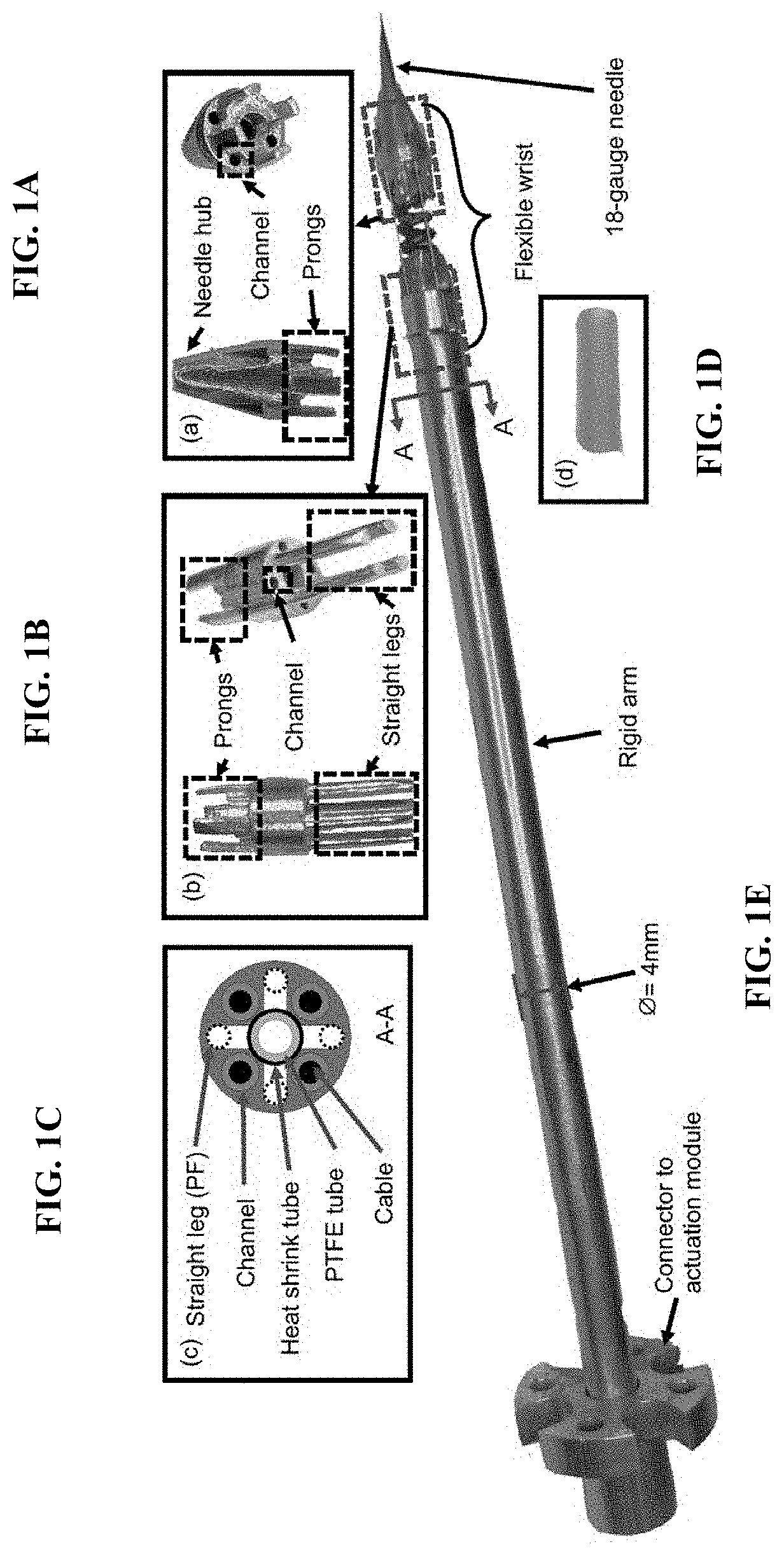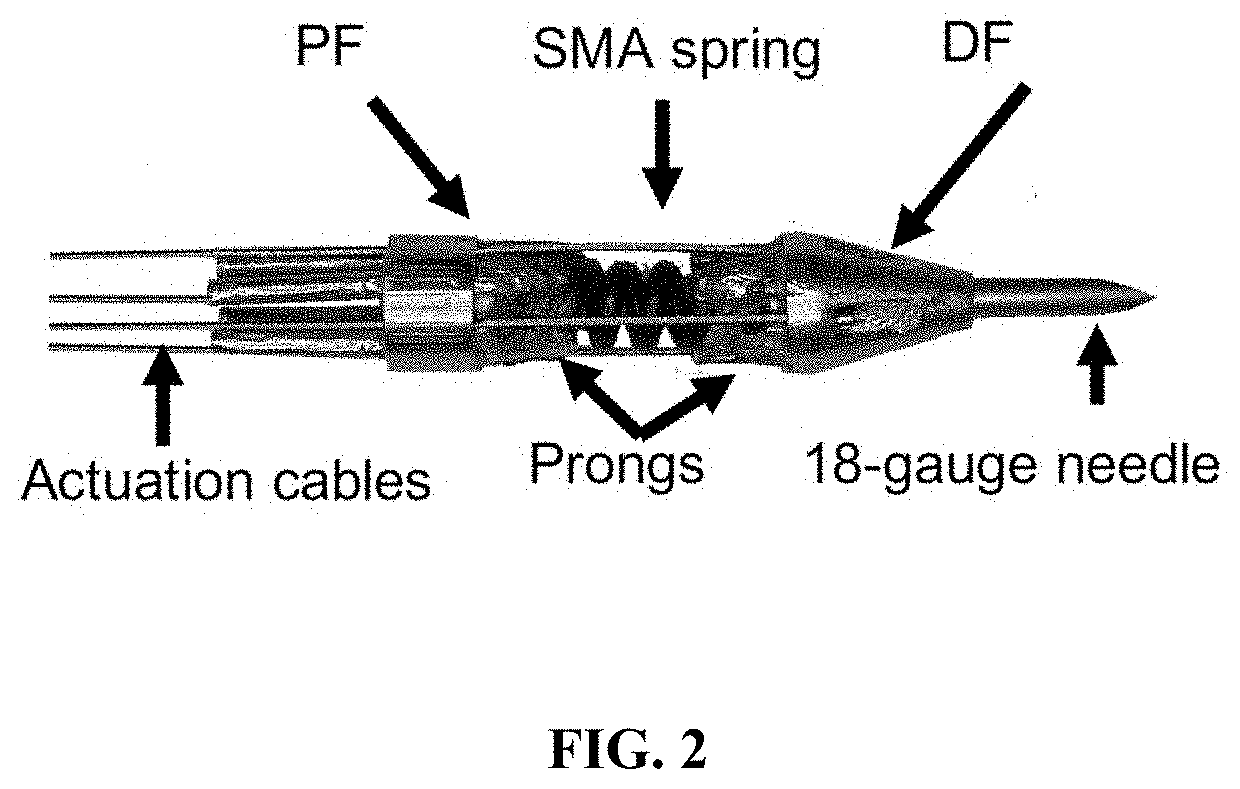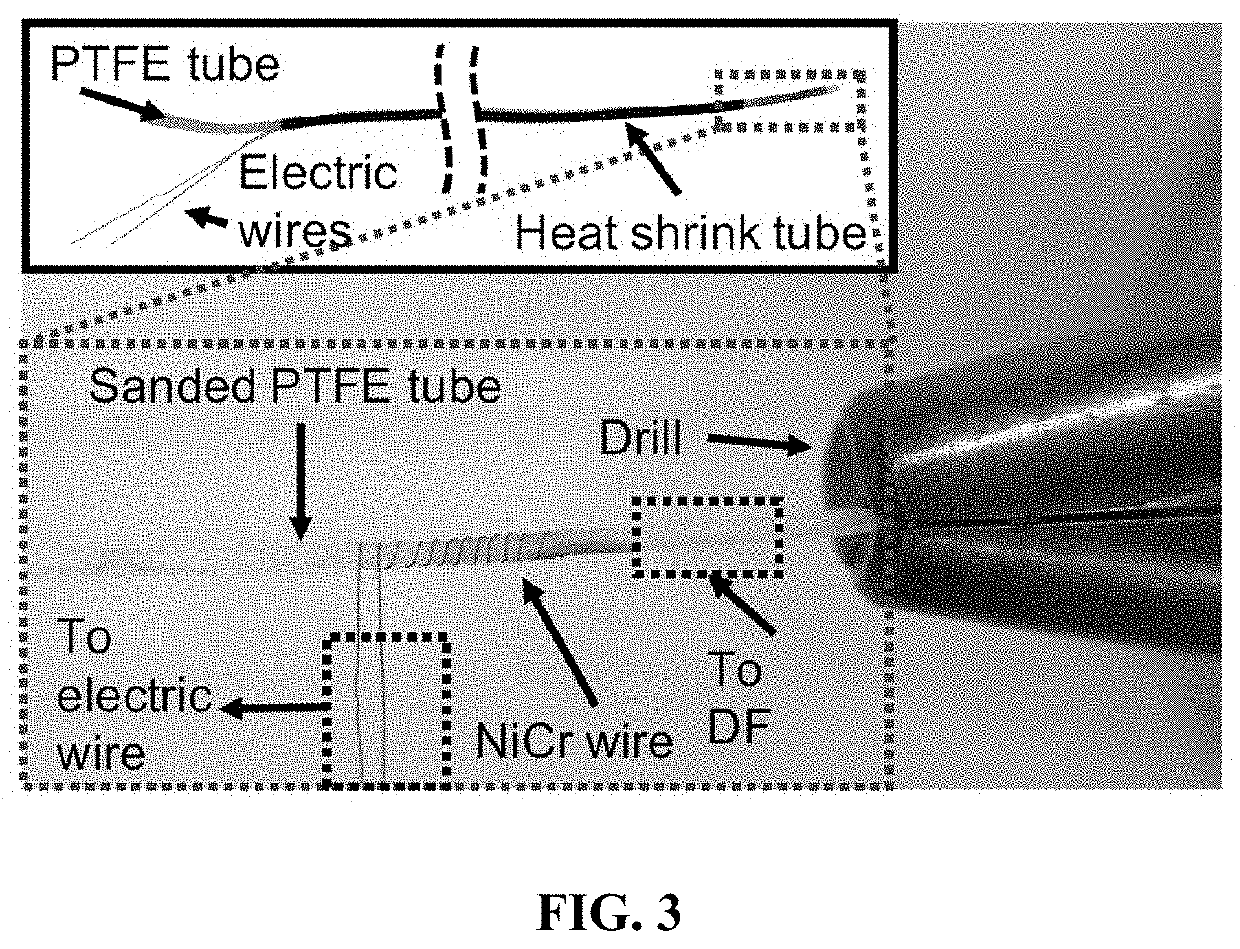Flexible surgical instruments for percutaneous and neurosurgical applications
a surgical instrument and percutaneous technology, applied in the direction of surgical forceps, application, vaccination/ovulation diagnostics, etc., can solve the problems of not being able to test for buckling resistance, hematoma evaluation percentage is often limited, and the procedure is prone to serious complications, so as to minimize the chance of damage to healthy tissue, bending large, and varying the stiffness
- Summary
- Abstract
- Description
- Claims
- Application Information
AI Technical Summary
Benefits of technology
Problems solved by technology
Method used
Image
Examples
example 1
d Fabrication
[0099]A steerable percutaneous device was developed as a surgical robot to perform robotic percutaneous insertion towards the heart and produce distal bending in the pericardial space. The following design requirements were met by the percutaneous robot generated: 1) The robot had a maximum outer diameter of 4 mm, matching the diameter of the dilator that is used in existing procedures after the initial needle puncturing. 2) The inner diameter of the robot was large enough to accommodate a tubing of 0.5 mm diameter and a guidewire of around 0.2 mm. The tubing allowed drainage of fluids through suctioning once the robot reached the pericardiac cavity while the guidewire was passed through the robot to facilitate the insertion of a cannula in the final step of the procedure. 3) The robot was able to bend at its distal tip to steer the tip away from the beating heart and facilitate the guidewire to stay inside the pericardial space after passing through the robot lumen. Th...
example 2
ube
[0102]Methods that could heat and stiffen the SMA spring were limited due to the small dimension of the robot. Because a soldering joint between a Nitinol and a copper electrical wire was relatively weak; it was highly challenging to create a soldering spot joint that did not increase the overall diameter of the spring, and routing a NiCr wire along the SMA wire turns of such a miniature SMA spring uniformly could lead to non-uniform distribution of the NiCr wires and therefore non-uniform heating along the SMA spring. Thus, a different design was generated. A heating element in the form of a compact tube that could be inserted into the lumen of the SMA spring and act as a controlled heat source was generated. The heating tube made of a PTFE tube wound with NiCr wire on its external surface is shown in FIG. 3.
[0103]As shown in FIG. 3, the heating tube consisted of two parts, namely the high resistance NiCr 2080 enameled coil of 30 mm diameter and 80 mm length, and a PTFE tube of ...
example 3
on of the Robot
[0105]The fabrication of the robot, which consisted of many miniature components, was a highly complex process. This was mainly due to the difficulty in fusing the SMA spring material, Nickel Titanium (Nitinol), with other metals and in structurally connecting a spring with other cylindrical structures. These challenges were compounded by the need to be structurally robust during both robot insertion into biological tissues and active bending. Besides, the need to heat the miniature SMA spring using hardware that did not further increase the diameter of the robot also complicated the overall design. Consequently, a few fabrication and assembly approaches that ensured the structural robustness of the robot were employed.
[0106]Because the SMA spring was the most critical component in the design since it allowed smooth percutaneous insertion in its stiff state and omnidirectional bending in its flexible state, it was critical that the SMA spring was strongly and rigidly ...
PUM
 Login to View More
Login to View More Abstract
Description
Claims
Application Information
 Login to View More
Login to View More - R&D
- Intellectual Property
- Life Sciences
- Materials
- Tech Scout
- Unparalleled Data Quality
- Higher Quality Content
- 60% Fewer Hallucinations
Browse by: Latest US Patents, China's latest patents, Technical Efficacy Thesaurus, Application Domain, Technology Topic, Popular Technical Reports.
© 2025 PatSnap. All rights reserved.Legal|Privacy policy|Modern Slavery Act Transparency Statement|Sitemap|About US| Contact US: help@patsnap.com



